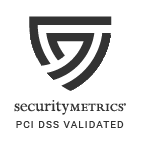The unfortunate truth is that as technology develops, so do cybercrimes. In fact, cybercrime is up 600% due to the pandemic. This number is daunting but very real due to the reality of remote work. Employees simply do not have the same level of security that the office does which makes them even more vulnerable to cyber-attacks. Fortunately, the opposite is true as well, as technology advances so does the ability to put preventative measures in place. We’ve comprised a list of the most common cyber-attacks of 2021 to help you stay more secure:
- Phishing:
Phishing attacks occur when cyber criminals attempt to steal information through emails or text messages. These attempts look like actual requests from reputable companies, so victims are easily tricked into downloading the malicious malware. In 2021, data breaches that involved phishing climbed to 36%. So, how can you recognize and protect yourself from phishing attacks? Cyber criminals conducting these types of scams will often send messages or emails from banks, social platforms or the government. These messages will tell a story to attempt to convince you to open a link or provide personal information, for example:
- Suspicious login activity or attempts
- Claim there is an issue with your payment information
- Ask you to confirm personal information
- Offer government refunds or payments
A preventative measure would be to verify the email address the information was sent from. Sometimes this includes random numbers or letters that don’t pertain the actual company, and if you’re ever unsure, google the company itself and call that phone number to verify.
- Malware Attacks:
A malware attack is a common method of cyber-crime where malicious software conducts unauthorized actions on the victim’s system. Although it can be extremely challenging to prevent malware attacks due to the quickly multiplying nature of them, there are a few ways to put yourself in a more secure position:
- Use strong passwords paired with multi-factor authentication
- Avoid using admin accounts whenever possible
- Update your software and devices often
- Monitor for suspicious activity on applications and emails
- Control access to systems
Preventative measures for malware attacks include, changing passwords quarterly, installing applications only from the App Store, referencing IT on suspicious activity.
- Distributed Denial of Service Attacks:
A distributed denial of service attacks or DDoS for short, occurs when multiple systems operate simultaneously to attack one target. DDoS attacks usually consist of the targeted server being flooded with internet traffic; this causes the server to shut down because too many requests are coming in at once. This occurs most commonly on a group of inter-connected devices so the cyber-criminal can carry out large scale attacks quicker and easier. Here are some preventative measures to put in place:
- Know your usual network traffic
- Educate and protect your users (secure authentication practices)
- Deploy a vertical network to add an additional layer of protection
In summary, although it is impossible to be 100% secured and never encounter a cyber-attack, preventative measures can make a large difference. Contact DMG if you believe your website may be at risk.


